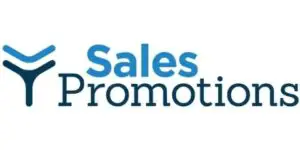Table of Contents
*This post may contain affiliate links. As an Amazon Associate we earn from qualifying purchases.
As online advertising continues to be a major part of marketing plans, how do you determine the right budget? One of the first things needed is the evaluation of the goals you want to achieve. What kind of leads do you want and what is the cost per lead you are willing to pay?
Because most online advertising efforts are targeted more for lead generation than your general advertising.
[amazon fields=”B01B35M3SM” value=”thumb” image_size=”large” image_align=”center”]
[amazon fields=”B01B35M3SM” value=”button”]
Quality versus Quantity determines Cost Per Lead
So is your campaign focused on securing highly qualified leads, general leads or just more names for your database? Are you looking for quick growth or a more steady growth pace?
Because each of those leads will cost you differently and it’s up to you to determine what a good cost per lead is for you.

Cost per lead or CPL is what you will pay for a lead. Most CPL campaigns are designed to engage potential customers at multiple touch points. They are aimed at getting prospects interested in your product or service so you can capture their information. Some examples include: signing-up for a whitepaper, subscribing to newsletter, filling out a contact form, downloading an offer or signing up for a rewards program.
Understand You have Control
In addition, the campaigns are very selective. The advertiser, you, is in control. You determine what content is relevant for your potential customers. You decide which sites are “compatible” with your brand. Basically you are determining who you trust to build your customer base.
Obviously a more quality lead is going to have a higher CPL than those leads that are more general in nature.
To help you in the math, one of the first things you need to understand is your current close rate. Of the leads your sales staff currently pursues, how often do they become clients? A general rule is about 10%. Some “rock star” sales people can close 25%. For sake of your budget I would recommend you use the 10% unless you have good sales statistics of your own (some very large ticket items can have a close rate of as low as 3%).
What does a 10% close rate really mean?
For every 10 leads you close 1.
The next step is to determine your average order size and the annual value of a typical customer. Say your average customer spends $2,500 per month

for $30,000 per year. Now of course this is a simplistic approach. In reality your monthly sales for a customer may vary widely but look at the annual amount for this exercise and calculate the average.
So you’ve got $30,000 in revenue on average from your customers. Now what is your gross profit? Again, for simplicities sake, let’s just assume 50%. So your gross profit per customer is $15,000 per year.
How much are you willing to spend to make an additional $15,000 gross profit per year? Remember you are only going to close about 10% of the leads. If your budget is $15,000 then how many leads do you need to break-even and how many to start making money?
Consider you get 10 leads a month and true to statistics you close one. And assume they immediately start spending $2500 per month. Then you will break even in 6-7 months. But what if your $15,000 annual expenditure brings you 10 leads per month for the full 12 months and you close one per month. Then you could break-even by month 4 and then you begin to make money.
- Month One: 1 customer $2500
- Month Two: 2 customers @ $2500 each
- Month Three: 3 customers @ $2500 each
- Total $15,000 – break-even point
[amazon fields=”1725617277″ value=”thumb” image_size=”large” image_align=”center”]
[amazon fields=”1725617277″ value=”button”]
Are you Prepared to Launch your CPL Campaign?

One point of caution, make sure you have the personnel and systems in place to handle this level of growth before you initiate the program. Maybe you will need to scale back or have a program that generates less leads on a monthly basis. Or you only engage the program every other month or less.
Remember, to keep your closure rate consistent you need adequate sales staff to call on these leads each month.
And, another point of caution is the time it takes you to close a sale. If you have a long sales cycle do you have the necessary cash-flow to support your lead generation efforts. The example above shows breaking even in 3 or even 6 months, if you have a 3 month close cycle you may not break-even for 9 months or longer. Obviously this is a simple cost formula and your company may have many other factors to consider, but it’s a good place to start.
If you upfront $15000 for nine months, can you afford it?
In addition to the cash-flow you also need to make sure your sales staff can handle multiple prospects in varying stages of the sales cycle. The last thing you need is that your sales cycle increases because your sales reps don’t have the time to close!
In this example, if close one per month, that’s 12 new customers for your $15,000 or a $1250 CPL. Is that too much? As I mentioned in the beginning,

only you can know what a good cost per lead is for your company. However, if you keep a customer for an average of 5 years the $1250 investment to make $75000 in gross profit might be acceptable. But if you have a higher attrition rate then you should probably find a less expensive cost per lead source.
Another rule of thumb is if you are looking for long term stable growth is to invest 50% of your gross profits back into your marketing efforts. So in this example you would be investing $7500 (50% of the $15000). Now, obviously you have more than one client and make more than $30000 in revenue on an annual basis. But hopefully this example helps you understand the overall CPL meaning and how it can positively or negatively affect your growth and bottom line.
[amazon fields=”B07BMKYBH4″ value=”thumb” image_size=”large” image_align=”center”]
[amazon fields=”B07BMKYBH4″ value=”button”]

